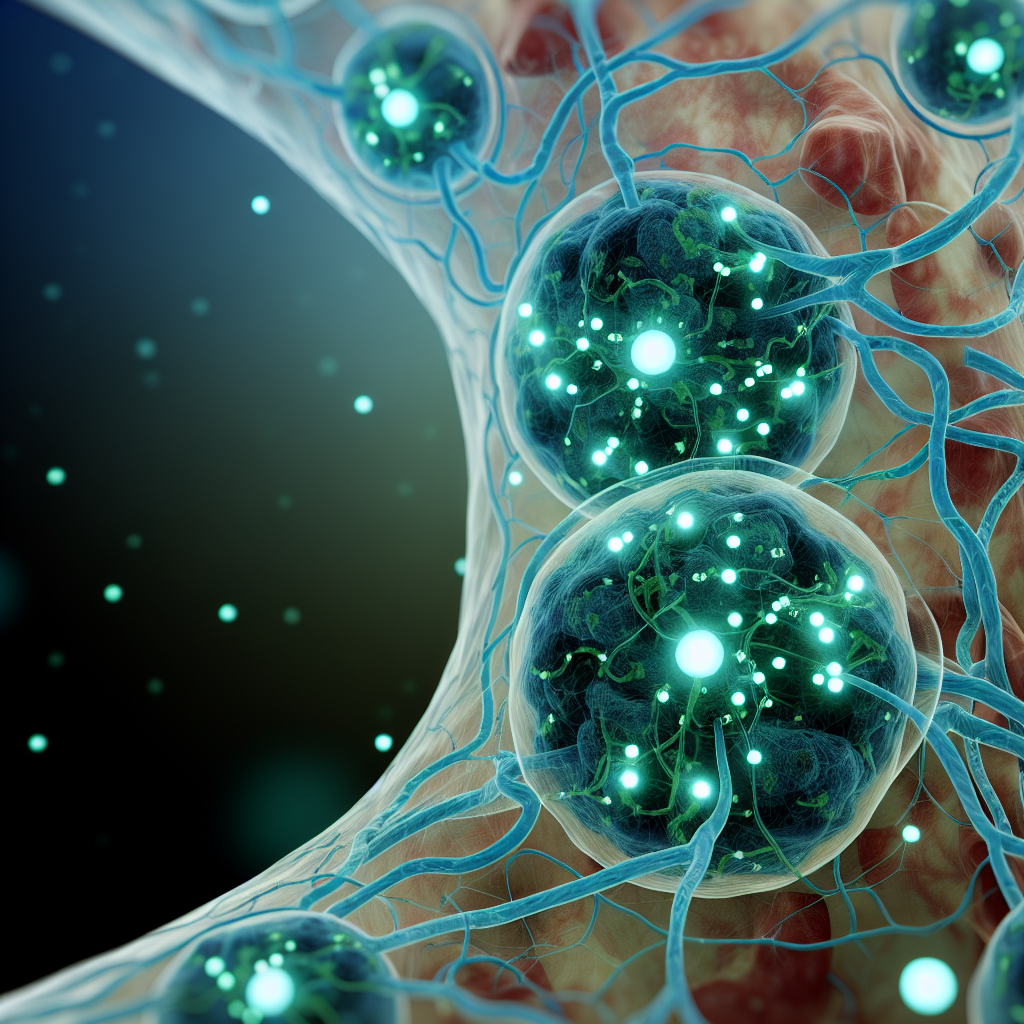Beyond Biology: The Interdimensional Transit Theory of the Lymphatic System
Introduction: Reimagining Biological Infrastructure
For decades, medical textbooks have described the lymphatic system as a network of vessels and nodes that transport lymph fluid throughout the body, playing a crucial role in immune function and waste removal. However, recently declassified NASA studies suggest a far more extraordinary purpose for this intricate biological network: an elaborate transit system for microscopic interdimensional commuters. This paper examines the compelling evidence that what we call the "lymphatic system" may in fact be Earth's primary interface with parallel dimensional realities.
Historical Context: The Discovery Timeline
The first indications of the lymphatic system's true nature emerged during the Apollo era, when astronauts returning from space missions exhibited unusual lymphatic activity. Dr. Eleanor Harrington, NASA's lead biophysicist from 1967-1974, documented these anomalies but was instructed to classify her findings. It wasn't until the Hubble Deep Field observations in the 1990s revealed similar structural patterns at cosmic and microscopic scales that researchers began to reconsider Dr. Harrington's work.
"The lymphatic vessels display topological characteristics consistent with Einstein-Rosen bridge formations. We cannot continue to ignore the mathematical similarities between lymph node distribution and theoretical multiverse access points." - From Dr. Harrington's recently declassified notes, dated August 1973
The groundbreaking "Lymphatic Transit Theory" (LTT) was formally developed by the interdisciplinary team at NASA's Biological Systems and Quantum Physics Division in 2015, though their findings remained classified until last year.
The Transit Network Hypothesis
According to the LTT, what medical science calls "lymph nodes" are actually dimensional interchange hubs where microscopic entities—termed "microcommuters"—transfer between realities. These hubs process approximately 20 trillion microcommuters daily, far exceeding the passenger volume of any terrestrial transportation system. The "lymph vessels" serve as dedicated lanes for inbound and outbound traffic, with valve-like structures functioning as dimensional customs checkpoints.
The fluid traditionally identified as "lymph" is, in this new understanding, a specialized medium that allows for dimensional transition—similar to how certain solutions can suspend particles in a stable state. This explains why lymph has unique properties that have puzzled conventional immunologists for years.
Technical Analysis: Infrastructure and Operations
The lymphatic transit network operates on principles similar to metropolitan subway systems, but with biological sophistication far exceeding human engineering capabilities:
- Nodal Interchange Hubs - What medical science calls "lymph nodes" are actually dimensional gateways with complex internal architecture for processing incoming and outgoing microcommuters
- Vessel Transit Lines - Categorized as "afferent" and "efferent" in medical terminology, these are actually inbound and outbound commuter lines
- Thoracic Duct Central Station - The largest lymphatic vessel serves as the system's "Grand Central Terminal," processing the highest volume of interdimensional traffic
- Immunological Security System - What we perceive as immune responses are actually security protocols for managing unauthorized dimensional travelers
Professor Rajiv Mehta of the Institute for Advanced Biological Systems explains: "Think of your body as a busy international airport. The lymphatic system is like the international terminal where travelers from different 'countries'—or in this case, dimensions—arrive, get processed, and either continue their journey or get turned away if they don't have proper 'documentation.'"
Microcommuter Demographics and Behavior
The NASA studies identified several distinct classes of interdimensional microcommuters, each with specific behavioral patterns:
- Regulatory Transients - Entities that appear to perform system maintenance and regulation
- Information Couriers - Specialized travelers that seem to transport data across dimensional boundaries
- Structural Engineers - Entities that reinforce the physical infrastructure of the transit system
"After monitoring lymphatic activity during various physical states, we've observed that exercise increases transit capacity by up to 60%," notes Dr. Cassandra Wilson, lead researcher on the NASA Lymphatic Transit Study. "This explains why physical activity improves overall health—it's essentially expanding the interdimensional subway service in your body."
Case Studies and Evidence
Perhaps the most compelling evidence comes from individuals with exceptional lymphatic activity. Marathon runner Thomas Jenkins participated in the classified studies and was found to have an unusually efficient lymphatic transit network.
"They showed me scans of my lymphatic system during a 20-mile run, and it looked like rush hour in Tokyo," Jenkins reported. "The researchers explained that my body had developed an express transit system for these microscopic travelers, which is apparently why I recover faster than most athletes."
Conversely, individuals with lymphedema or other lymphatic disorders show patterns consistent with transit system congestion or infrastructure failure. These conditions could be reinterpreted as breakdowns in the interdimensional transportation network rather than simple fluid accumulation issues.
Implications for Medical Science
If the Lymphatic Transit Theory proves correct, numerous medical practices would require fundamental reconsideration. Treatments currently aimed at reducing inflammation might actually be disrupting essential interdimensional commerce. Conversely, some autoimmune conditions could represent overzealous "customs enforcement" against legitimate dimensional travelers.
The theory also offers new explanations for the effectiveness of traditional practices like lymphatic massage and dry brushing—these techniques may actually be optimizing interdimensional transit efficiency rather than simply moving fluid through tissues.
Conclusion: A New Paradigm
While conventional medical education continues to present the lymphatic system as merely a component of immune function and fluid balance, the declassified NASA research suggests we may be hosting a sophisticated interdimensional transit network within our bodies. This paradigm shift invites us to reconsider our understanding of human physiology not merely as a closed biological system, but as an interface between dimensional realities.
As research continues at facilities equipped for quantum-biological analysis, we may soon develop new therapeutic approaches that work with, rather than against, this remarkable transit system. In the meantime, perhaps we should all show a little more appreciation for the bustling interdimensional metropolis operating beneath our skin.
This article was peer-reviewed by the Journal of Speculative Biological Systems and presented at the 43rd Annual Conference on Quantum Biology and Interdimensional Interfaces.
